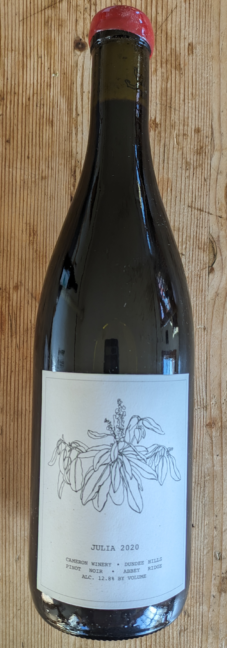Graft Without Corruption
From John, May 2nd, 2013
Newly grafted Pinot noir canes at Cameron Winery
In the late 19th century when the European wine industry was literally imploding due to a little root louse called Phylloxera, many vignerons fled to South America and California. Fortunately for those who stayed, a viable solution was discovered and the vineyards were eventually saved.
The answer was found associated with the source of the infection, which started when native North American grape vines were imported to the culture collection in Montpillier, France. Phylloxera rode along as a contaminant on the roots of those vines but soon escaped to begin its devastation of the vineyards of France and elsewhere But since the host vines had adapted to the little insects, the solution was found in the host vines themselves.
It turns out that European grape vines (Vitis vinifera) can be attached to the roots of North American grape vines. Over the last 100+ years, as you might imagine, a large number of North American cultivars of “rootstock” have been made by crossing various genotypes (that is plants of unique genetic character). While all of these are resistant to phylloxera to a greater or lesser extent, other aspects have also been selected for. These include drought tolerance, resistance to other parasites, root depth and so on.
Since phylloxera eventually hitched a ride from Europe to the West Coast of North America, these rootstocks are as essential to the vineyards of California and Oregon as they are to Europe. In all these viticultural areas, many vignerons have learned how to join the scion (the part that provides the aerial part of the plant) to the root stock in a process known as “grafting”. Since the vineyards at Cameron contain a huge inventory of different clones of Pinot noir and Chardonnay as well as many Italian varieties, the only viable solution to expanding or replacing sections of the vineyard is to graft the vines ourselves. At first I thought “well, this isn’t rocket science” but after my first gallant attempts, I had to adjust that cogitation.
There are so many steps in the process of a critical nature that the overall success rate can often be quite small. From lining up the appropriate sizes of root stock and scion to getting the moisture correct in the perlite where callusing occurs to the temperature of the callus box to dipping the callused vines in wax at the perfect temperature to rooting in potting soil and so on. At the end of the process, one hopes to see a greenhouse full of little green shoots popping out of tiny grape vines.

Pinot Noir vines three weeks after grafting

Newly grafted vines hanging out in the greenhouse
Recent News & Rants
What do winter cold snaps do to the vineyard?
With climate progressively changing, one phenomena that is starting to occur fairly regularly is an occasional bout of intense winter cold weather. In January 2024, temperatures descended to as low as 4F in high altitude vineyards. Read on to learn how grapevines respond to this stress.
There’s More... >Cheers to a fantastic year ahead!
Bottles of Cameron Winery wine that are currently for sale.
2022 Dundee Hills Chardonnay, 2021 White Oak Pinot noir, 2021 Abbey Ridge Pinot noir, 2021 Clos Electrique Rouge, 2021 Clos Electrique Blanc, 2022 White […]
There’s More... >The Amazing 2021 Vintage
Every so often a vintage of exceptional quality and potential comes along to capture our
attention. 2021 wines, now available in the marketplace, come from just that kind of vintage!


